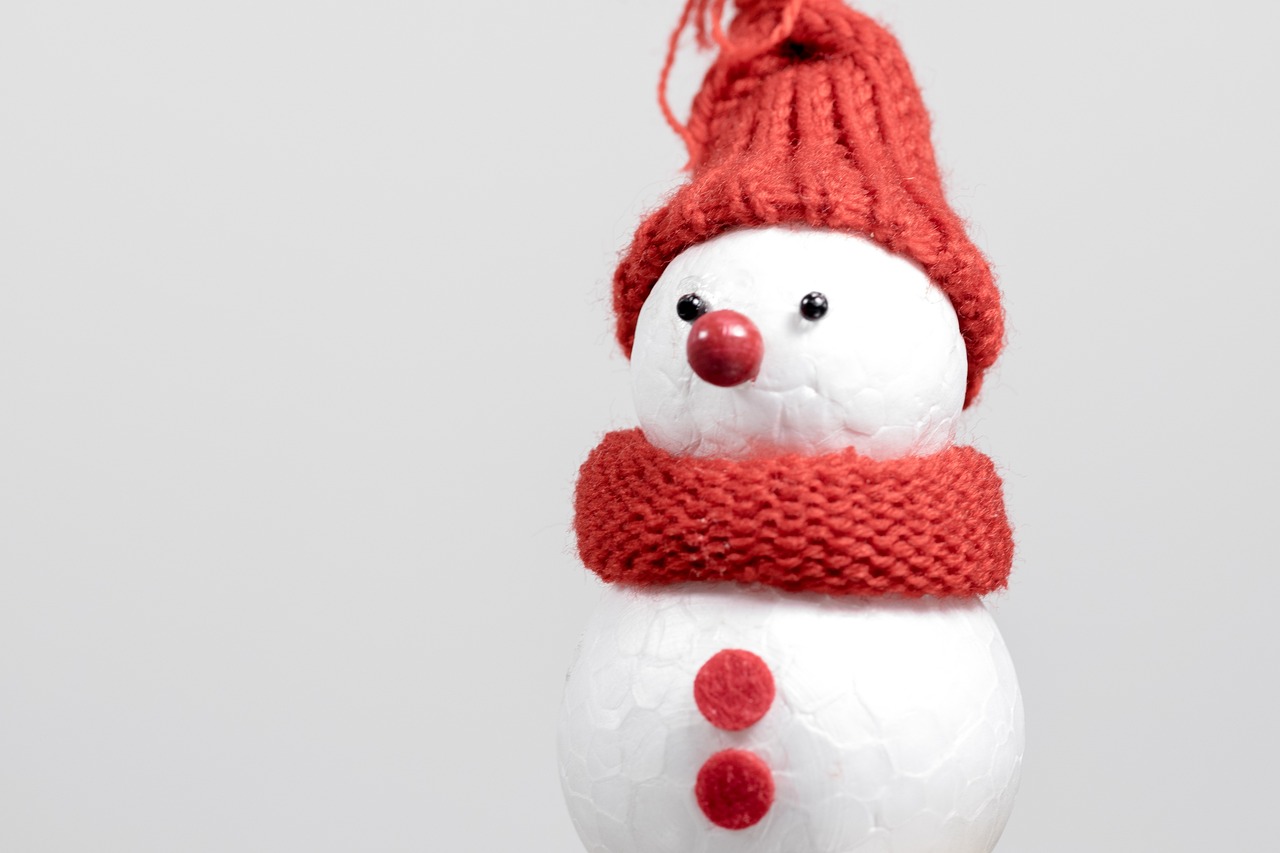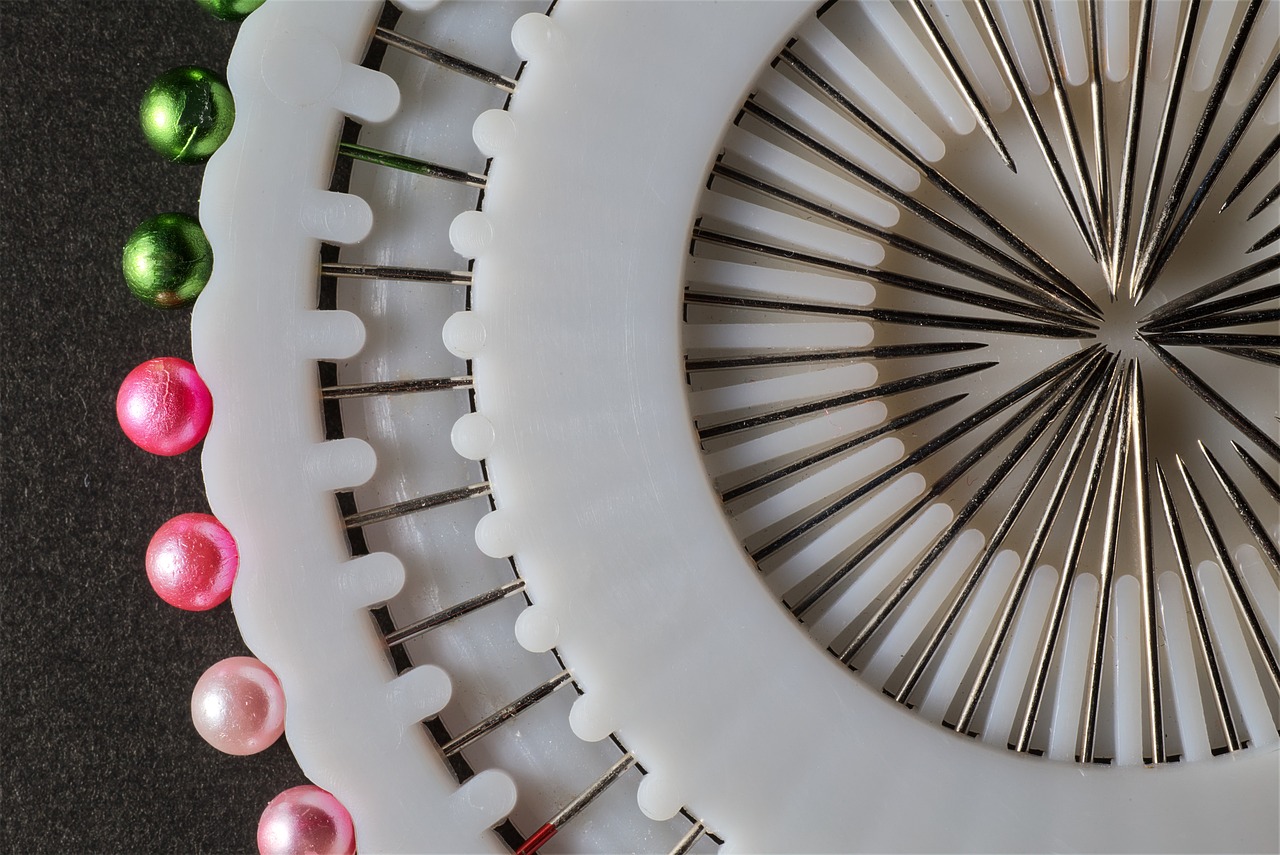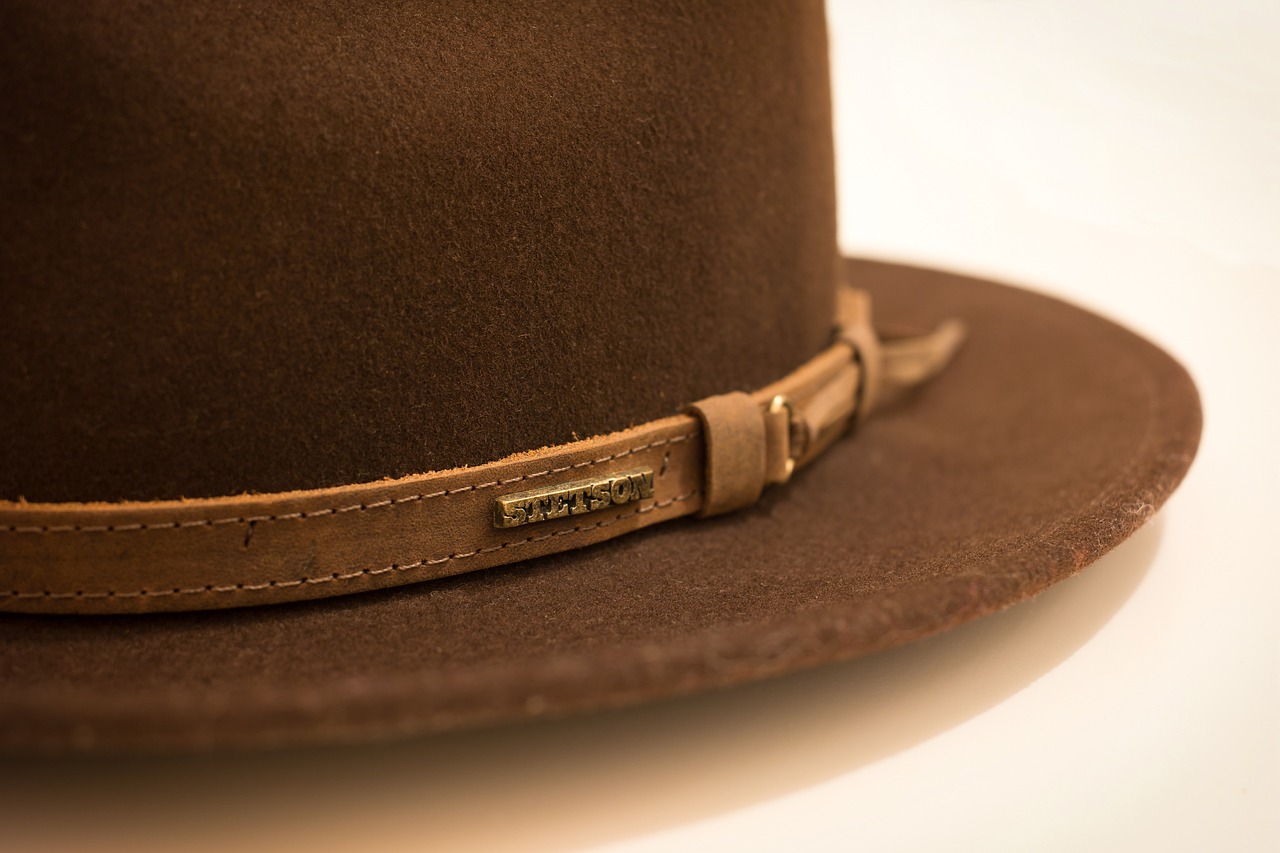The Ultimate Felt Crafts Guide for Kids
Welcome to the wonderful world of felt crafts! This comprehensive guide explores a vibrant and creative avenue for kids to express themselves while having a blast. Felt crafting is not just about creating; it's about imagination, exploration, and learning. Whether you're a parent looking to engage your children in fun activities or a teacher seeking educational projects, this guide is packed with ideas that will keep kids entertained and inspired.
Felt is a versatile material that comes in a rainbow of colors, making it ideal for crafting. It’s soft, easy to cut, and doesn’t fray, which means kids can dive right into their projects without worrying about messy edges. Plus, crafting with felt can enhance fine motor skills, boost creativity, and even provide a sense of accomplishment when they complete their projects. So, grab your scissors and glue, and let’s dive into this colorful world!
Before we jump into the fun stuff, let’s talk about what you need to get started. The basics of felt crafting include a few essential materials and tools:
- Felt Sheets: Available in various colors and thicknesses.
- Scissors: Child-safe scissors are perfect for little hands.
- Glue: Fabric glue or hot glue works best for felt projects.
- Markers: Fabric markers for adding details and personalization.
- Needles and Thread: For those who want to sew their creations.
Safety is paramount, especially with younger crafters. Always supervise children when using sharp tools or hot glue. Create a designated crafting area where spills and messes are okay, allowing kids to explore freely without the stress of cleanup.
Now that you have your materials, let’s unleash some creativity! Here are a few engaging felt craft projects that will spark joy in your little ones:
- Simple Shapes: Start with basic shapes like circles, squares, and stars. Kids can create their own felt puzzles or garlands.
- Felt Animals: Turn felt into cute creatures! From lions to ladybugs, the options are endless.
- Felt Flowers: Kids can create vibrant bouquets that never wilt!
These projects not only encourage creativity but also help enhance fine motor skills as children cut, glue, and assemble their masterpieces.
Felt crafts can be tailored to celebrate the seasons and holidays, making them even more exciting! Imagine creating a felt snowman for winter or colorful leaves for fall. Here are some ideas:
Get festive with unique felt decorations! Kids can craft:
- Halloween: Spooky ghosts, jack-o'-lanterns, and bats.
- Christmas: Ornaments, stockings, and Santa hats.
- Easter: Bunnies, eggs, and spring flowers.
These projects not only beautify your home but also allow children to express their creativity while learning about different cultures and traditions.
As the seasons change, so can your felt projects! Spring and summer offer a chance to engage kids with vibrant themes:
- Flowers: Create colorful blossoms that brighten any space.
- Animals: Craft felt representations of butterflies, birds, and more.
- Outdoor Themes: Design felt picnic mats or camping scenes!
These activities not only promote creativity but also encourage kids to explore nature and the outdoors.
Felt crafts can also serve as fantastic educational tools. By incorporating counting, colors, and shapes into projects, children can learn essential skills while having fun. For example, creating a felt number line can help kids practice counting, while color sorting activities can teach them about different hues.
To ensure a successful crafting experience, consider these valuable tips:
- Organization: Keep your materials sorted and accessible.
- Project Planning: Choose age-appropriate projects to minimize frustration.
- Encouraging Creativity: Allow kids to put their spin on projects, fostering independence and imagination.
Understanding the different types of felt available is crucial for achieving quality results. There are various grades of felt, from craft felt (which is economical and easy to work with) to wool felt (which is more durable and has a luxurious feel). Selecting the right type will ensure a satisfying crafting experience for kids.
Don't hesitate to enhance felt crafts by incorporating other materials! Adding buttons, beads, and ribbons can transform a simple felt project into a unique mixed-media masterpiece. This not only allows children to experiment but also showcases their personal style, making each project truly one-of-a-kind.
1. What age is appropriate for felt crafting?
Felt crafts can be enjoyed by children as young as three, with supervision. Older kids can take on more complex projects.
2. Can felt crafts be used for educational purposes?
Absolutely! Felt crafts can teach counting, shapes, colors, and even storytelling.
3. What types of felt are best for beginners?
Craft felt is ideal for beginners due to its affordability and ease of use. As kids gain confidence, they can explore higher-quality felt options.
So, are you ready to embark on a felt crafting adventure with your kids? Gather those materials and let the creativity flow!

Getting Started with Felt Crafts
Felt crafting is an exciting and accessible way to unleash creativity in kids! If you're just diving into the world of felt crafts, you might be wondering where to start. First things first, let’s talk about the essential materials you'll need. Felt comes in a variety of colors and thicknesses, but for beginners, a basic set of craft felt sheets is perfect. You can find these at most craft stores or online, and they’re usually inexpensive, making them a great choice for kids who might be a little rough on their materials.
In addition to felt, having the right tools is crucial for a smooth crafting experience. Here’s a quick list of some must-have tools:
- Scissors: A pair of sharp scissors designed for fabric will make cutting shapes much easier.
- Glue: Fabric glue or a hot glue gun (with adult supervision) works wonders for sticking pieces together.
- Needles and Thread: If you want to introduce sewing, using blunt-tipped needles and colorful thread can make it fun and safe.
- Pens or Markers: These are great for tracing patterns on felt before cutting.
Safety is paramount, especially when crafting with kids. Always supervise young children when using sharp tools or hot glue. It’s a good idea to set up a crafting area that’s safe and organized, so kids can focus on their creativity without distractions. Make sure to cover surfaces with newspaper or a plastic tablecloth to catch any glue spills or felt scraps.
Once you have your materials and tools ready, it’s time to explore the endless possibilities of felt crafting! Start with simple projects to build confidence. How about making some adorable felt shapes like hearts or stars? These basic forms can be turned into keychains, ornaments, or even garlands. The beauty of felt is that it doesn’t fray, so kids can cut shapes without worrying about finishing edges. This gives them the freedom to experiment and create without the fear of ruining their work.
As you embark on this crafting journey, encourage your kids to express their ideas. Ask them questions like, “What colors do you want to use?” or “What shapes do you want to create?” This not only fosters creativity but also helps them develop decision-making skills. Remember, the goal is to have fun, explore, and learn through the process of creating. So gather your materials, roll up your sleeves, and let the crafting adventures begin!

Fun Felt Craft Ideas
Felt crafts are not just a way to keep kids busy; they are a gateway to creativity and imagination! When you dive into the world of felt, you open up a treasure trove of possibilities. From simple shapes to intricate designs, the beauty of felt crafting lies in its versatility. Whether your child is a budding artist or just looking for a fun activity, felt crafts can cater to every age and skill level. Imagine transforming a simple piece of felt into colorful animals, whimsical characters, or even personalized gifts! The only limit is your child's imagination.
One of the best things about felt is its ease of use. It’s soft, forgiving, and comes in a myriad of colors, making it perfect for little hands. Plus, felt doesn’t fray, so you can cut it into any shape without worrying about it falling apart. This opens up a world of projects that can range from quick and easy to more detailed and time-consuming. For instance, you might start with basic shapes like circles and squares, and as your child gains confidence, you can introduce more complex designs like felt puppets or even a felt board story. The joy of seeing a project come to life is unmatched!
To help spark some inspiration, here are a few fun felt craft ideas that you can try at home:
- Felt Animals: Create adorable felt animals like cats, dogs, or even mythical creatures. These can be made into toys or decorations.
- Felt Flowers: Craft beautiful felt flowers that can be used in bouquets or as hair accessories. They never wilt and can brighten up any day!
- Felt Magnets: Design fun felt magnets by cutting out shapes and gluing them onto magnet sheets. Perfect for decorating the fridge!
- Felt Bookmarks: Encourage reading by making personalized bookmarks. Kids can decorate them with their favorite characters or designs.
Now, let’s not forget about the seasonal aspect of felt crafts! Engaging kids with themed projects can make crafting even more exciting. For example, during Halloween, they can make spooky felt ghosts or pumpkins. Christmas could see them creating ornaments or festive decorations. The changing seasons provide a perfect backdrop for felt crafting, allowing children to explore different themes and colors throughout the year.
Additionally, felt crafts can also serve as a wonderful opportunity for parents and children to bond. Imagine sitting together at the kitchen table, surrounded by vibrant felt pieces, scissors, and glue, laughing and sharing stories as you create something beautiful together. This is more than just crafting; it’s about building memories that will last a lifetime. So, gather your materials, unleash your creativity, and let the felt adventures begin!
Q1: What tools do I need for felt crafting?
A1: Basic tools include scissors, glue (hot glue works best), and a needle and thread for sewing. A cutting mat can also be helpful for more intricate designs.
Q2: Can felt crafts be educational?
A2: Absolutely! Felt crafts can teach kids about shapes, colors, and even basic sewing skills. They can also enhance fine motor skills and encourage creativity.
Q3: Is felt safe for young children?
A3: Yes, felt is generally safe for children. However, always supervise young kids when using scissors or hot glue to ensure safety.
Q4: How do I store leftover felt pieces?
A4: Store leftover felt in a cool, dry place. Organizing them by color in clear containers can make it easier for kids to find what they need for their next project!

Seasonal Felt Crafts
Seasonal felt crafts are a fantastic way to bring the joy of each holiday and season into your home while keeping kids engaged and creative. Imagine transforming your living room into a vibrant display of felt art, where each piece tells a story of the season! Whether it’s the blooming flowers of spring or the festive decorations of winter, felt crafts offer endless possibilities for children to express their creativity.
One of the best aspects of seasonal felt crafts is their versatility. You can create simple projects that require minimal materials or dive into more intricate designs that challenge older kids. For instance, during the fall, kids can make adorable felt pumpkins and scarecrows, perfect for decorating their rooms or even as a part of a larger autumn-themed display. The tactile nature of felt allows children to explore different textures, colors, and shapes, making the crafting experience both educational and fun.
As the seasons change, so do the themes of the crafts. Here are some exciting ideas to get you started:
- Spring: Craft colorful felt flowers, butterflies, and even a felt garden that can be used for imaginative play!
- Summer: Create beach-themed crafts like felt suns, seashells, and beach balls that capture the essence of summer fun.
- Autumn: Make felt leaves, acorns, and cozy fall animals, which can be used to adorn your home and celebrate the harvest.
- Winter: Design festive felt ornaments, snowflakes, and holiday characters that can be hung around the house or given as gifts.
Moreover, these projects can be a great way to teach kids about the significance of each season. For example, while making a felt Christmas tree, you can share stories about holiday traditions and customs, fostering a sense of connection and understanding. In this way, crafting becomes more than just a fun activity; it evolves into a meaningful experience that enriches children's knowledge about the world around them.
Not only do these seasonal felt crafts ignite creativity, but they also serve as a wonderful bonding activity for families. Imagine sitting together, sharing laughter, and creating beautiful decorations that will adorn your home. It’s like creating a tapestry of memories that you can cherish for years to come! Plus, these crafts are often easy to store and can be reused year after year, making them not only a fun project but also a sustainable choice.
So, gather your materials, unleash your imagination, and let the seasons inspire your next felt crafting adventure. Whether you’re a parent, teacher, or simply a crafting enthusiast, seasonal felt crafts are sure to bring joy and creativity into your life!
Q: What materials do I need for seasonal felt crafts?
A: Basic materials include colored felt sheets, scissors, glue, and optional embellishments like buttons or ribbons. You can also use templates for more complex designs.
Q: Are felt crafts safe for young children?
A: Yes, felt is a soft material, making it safe for children. However, always supervise young kids, especially when using scissors or glue.
Q: Can I incorporate seasonal felt crafts into educational activities?
A: Absolutely! Felt crafts can be used to teach children about colors, shapes, and even storytelling, making them a great educational tool.
Q: How can I store seasonal felt crafts?
A: Store completed crafts in a dedicated box or container to keep them safe and organized. You can also label them by season for easy access.

Felt Decorations for Holidays
When it comes to celebrating holidays, nothing adds a personal touch quite like handmade decorations. Felt decorations are not only easy to make but they also provide a wonderful opportunity for kids to express their creativity. Imagine a cozy home adorned with colorful felt ornaments, each one crafted with love and care by little hands. Whether it's Halloween, Christmas, or Easter, felt crafts can transform your space into a festive wonderland.
For Halloween, kids can create spooky felt ghosts, pumpkins, and bats that can hang from doorways or be placed on tables. These projects are not just about crafting; they also encourage storytelling and imaginative play. For instance, while making a felt pumpkin, children can discuss what they might find inside a real pumpkin or share their favorite Halloween memories. This blend of crafting and conversation makes the experience even more enriching.
When the holiday season rolls around, Christmas felt decorations can be a delightful way to get the family involved. Think of bright felt stars, Christmas trees, and adorable Santa figures. You can even create a felt advent calendar that children can fill with small surprises or activities leading up to Christmas Day. Each day can bring a new felt surprise, making the countdown to Christmas an exciting adventure.
As spring blooms, felt decorations can take on a fresh twist with Easter-themed crafts. Kids can make colorful felt eggs, cute bunnies, and vibrant flowers. These decorations can be used to brighten up your home or even as gifts for friends and family. The best part? Each felt creation can lead to discussions about the significance of the holiday and the changing seasons, enhancing both their crafting and learning experiences.
Here are some ideas for felt decorations you might want to try:
- Halloween: Create a felt garland of ghosts and pumpkins to hang across your living room.
- Christmas: Make felt ornaments in various shapes to decorate your Christmas tree.
- Easter: Design a felt bunny basket to hold Easter eggs during your egg hunt.
In addition to being fun, these felt crafts can also serve as educational tools. Kids can learn about colors, shapes, and even basic sewing techniques as they work on their projects. Plus, the tactile nature of felt helps enhance fine motor skills, making it a win-win for both fun and learning.
So, gather your materials and let the holiday crafting begin! With a little bit of felt, some scissors, and a dash of imagination, your home will be filled with unique decorations that not only celebrate the season but also showcase the hard work and creativity of your young crafters. Remember, the best decorations are those made with love, and felt crafts are the perfect way to bring that love to life during the holidays.
Q: What materials do I need for felt decorations?
A: You'll need felt sheets in various colors, scissors, fabric glue or a hot glue gun, and optional embellishments like buttons or ribbons.
Q: Are felt crafts safe for young children?
A: Yes, felt is a safe material for kids. Just be sure to supervise younger children, especially when using scissors or hot glue.
Q: How do I store my felt decorations?
A: Store your felt decorations in a cool, dry place. Use plastic bins or bags to keep them organized and protected from dust.

Spring and Summer Felt Projects
As the flowers bloom and the sun shines brighter, spring and summer provide a wonderful backdrop for engaging felt projects that spark creativity in children. These seasons are all about vibrant colors and lively themes, making them perfect for crafting activities that reflect the beauty of nature. Imagine your little ones creating colorful felt flowers that resemble the ones they see in the garden or adorable felt animals that bring the joy of summer into their playtime. The possibilities are endless!
One exciting project to consider is making felt flower garlands. It’s not only a fun activity but also a fantastic way for kids to explore their artistic side. They can cut out various shapes of flowers and leaves from colorful felt sheets and string them together to create stunning garlands that can be hung around the house or in their playroom. This project not only beautifies their surroundings but also enhances their fine motor skills as they cut, glue, and arrange the felt pieces.
Another delightful idea is to craft felt animal puppets. Kids can choose their favorite animals, from bunnies hopping through the spring fields to colorful fish swimming in summer ponds. With some basic templates, they can cut out the felt shapes and assemble them into fun puppets. This activity not only nurtures their creativity but also encourages imaginative play, as they can put on puppet shows for family and friends, bringing their creations to life!
For a more interactive project, consider creating a felt picnic set. Children can make felt sandwiches, fruits, and even drinks, allowing them to engage in imaginative play that mimics real-life scenarios. They can set up a picnic in the backyard or living room, using their felt creations to serve delicious pretend meals. This project is a wonderful way to combine crafting with role-playing, fostering social skills and creativity.
To assist you in planning these spring and summer felt projects, here’s a quick overview of essential materials you might need:
| Material | Usage |
|---|---|
| Felt Sheets | Base material for all projects |
| Scissors | Cutting shapes and designs |
| Glue | Assembling pieces together |
| Needle and Thread | Sewing pieces for durability |
| Buttons and Beads | Decorative elements for embellishment |
Finally, don't forget to encourage your children to express their unique styles. Let them choose their colors and designs, and perhaps even add personal touches like their names or favorite patterns. The joy of crafting lies not just in the end product but in the process itself. So, roll up your sleeves, gather your materials, and get ready to dive into a world of spring and summer felt crafting fun!
Q: What age group is suitable for felt crafts?
A: Felt crafts can be enjoyed by children of all ages. However, younger kids may need assistance with cutting and using sharp tools.
Q: Can I use other materials with felt?
A: Absolutely! Incorporating buttons, beads, and ribbons can enhance your felt projects and allow for more creativity.
Q: How do I clean felt crafts?
A: Most felt crafts can be gently spot cleaned with a damp cloth. For larger items, consider hand washing them in cold water and air drying.
Q: Are felt crafts safe for kids?
A: Yes, felt is a safe material for kids. Just ensure that they are supervised when using scissors or other sharp tools.

Educational Felt Crafts
Felt crafts are not just about fun and creativity; they can also serve as excellent educational tools for children. Imagine transforming a simple piece of felt into an interactive learning experience! By engaging kids in crafting activities, we can help them develop essential skills in a way that's enjoyable and memorable. Whether it's counting, recognizing colors, or understanding shapes, felt crafts can turn abstract concepts into tangible experiences.
For instance, consider a project where children create a colorful felt counting board. By cutting out various shapes and numbers from felt, kids can practice counting as they match the shapes to their corresponding numbers. This hands-on approach not only reinforces their counting skills but also enhances their fine motor skills as they cut, glue, and arrange the felt pieces. It's like playing a game while learning!
Additionally, felt crafts can be tailored to teach colors and shapes. You can create a vibrant felt rainbow, where each color is a different piece of felt. As children assemble the rainbow, they learn to identify colors and understand the concept of sequencing. Similarly, crafting shapes like circles, squares, and triangles can help kids recognize and differentiate between these basic forms. The tactile experience of working with felt makes these concepts more relatable and easier to grasp.
Moreover, felt crafts can be integrated into various subjects, making learning interdisciplinary. For example, a felt map can be created to teach geography. Kids can cut out different landforms, such as mountains, rivers, and forests, from felt and place them on a base to create their own geographical landscape. This not only teaches them about different terrains but also encourages storytelling and imaginative play. It's like building a world where they can explore and learn simultaneously!
To further enrich the educational experience, consider incorporating themes into your felt crafting sessions. For example, during a science-themed crafting day, you could create felt representations of the solar system. Each planet can be represented by a different felt piece, allowing kids to learn about the planets while they craft. This method of learning through creation fosters curiosity and a love for knowledge.
In summary, educational felt crafts are a fantastic way to blend creativity with learning. By using felt as a medium, parents and educators can provide children with opportunities to develop vital skills while having a blast. So, gather your felt and let the learning begin!
- What age group is suitable for felt crafts? Felt crafts are suitable for children of all ages, with simpler projects for younger kids and more complex designs for older children.
- Do I need special tools for felt crafting? Basic tools like scissors, glue, and needles are often sufficient. However, having a hot glue gun and fabric scissors can make the crafting process easier.
- Can felt crafts be used in classrooms? Absolutely! Felt crafts can be incorporated into various subjects, making learning interactive and enjoyable for students.
- How can I ensure safety while crafting? Always supervise young children while crafting, use child-safe scissors, and ensure that any small embellishments are kept away from younger kids to prevent choking hazards.

Tips for Successful Felt Crafting
When it comes to felt crafting, a little preparation can go a long way in ensuring a fun and successful experience for kids. First and foremost, organization is key. Before diving into a project, gather all the necessary materials and tools. This could include various colors of felt, scissors, glue, and embellishments like buttons and ribbons. Having everything at hand not only saves time but also keeps the crafting area tidy, reducing distractions and allowing kids to focus on their creative process.
Next, consider project planning. It’s essential to choose projects that match the skill level of the children involved. For younger kids, simple shapes like hearts or stars are perfect. As they gain confidence, you can introduce more intricate designs that challenge their growing skills. Remember, the goal is to keep crafting fun and engaging, not frustrating. If a project seems too complex, don’t hesitate to break it down into smaller, manageable steps.
Another important tip is to encourage creativity. Allow kids to personalize their felt crafts by choosing their own colors and designs. This not only makes the project more enjoyable but also fosters a sense of ownership and pride in their work. You might be surprised at the imaginative ideas they come up with! For instance, if they’re making a felt animal, suggest they add unique features like a polka-dotted scarf or googly eyes to make it truly their own.
Additionally, ensure that safety is a priority during crafting sessions. Use child-safe scissors and non-toxic glue to keep things safe and sound. Supervision is always a good idea, especially when working with younger children. Encourage them to ask for help whenever they feel uncertain about using tools or materials. This not only keeps them safe but also builds their confidence as they learn to navigate the crafting world.
Lastly, don’t forget to incorporate other materials into your felt projects. Mixing felt with other elements like beads, sequins, or even natural items like twigs can elevate a simple craft into something extraordinary. For example, adding a few beads to a felt flower can give it a beautiful touch of sparkle, while twigs can serve as stems for a charming felt garden. This experimentation not only enhances the visual appeal but also allows children to express their personal style.
In summary, successful felt crafting hinges on organization, thoughtful project selection, encouragement of creativity, safety, and the incorporation of diverse materials. By following these tips, you’ll create an atmosphere where children can thrive artistically and enjoy the process of crafting with felt.
- What age is appropriate for felt crafting? Felt crafting can begin as early as preschool age, with simple projects designed for their skill level. Always supervise younger children.
- What tools do I need for felt crafting? Basic tools include scissors, fabric glue, and markers. As kids advance, they might enjoy using sewing needles for more complex projects.
- Can felt crafts be educational? Absolutely! Felt crafts can teach children about shapes, colors, and fine motor skills while allowing them to express their creativity.
- How do I clean up after a felt crafting session? Encourage kids to help with cleanup by putting away materials and wiping down surfaces. A designated crafting area can make this process easier.

Choosing the Right Felt
When diving into the vibrant world of felt crafts, one of the most crucial decisions you'll face is . With so many options available, it can feel overwhelming, but don't worry! We're here to break it down for you. First off, you'll want to consider the type of felt you need for your project. There are two main categories: wool felt and synthetic felt. Wool felt is known for its durability and rich texture, making it ideal for projects that require a bit more finesse. On the other hand, synthetic felt is usually more affordable and comes in a wide array of colors, perfect for kids' crafts where fun and creativity reign supreme.
Next, think about the thickness of the felt. Felt typically comes in several thicknesses, measured in millimeters. For instance, 1mm felt is great for lightweight projects like decorations or appliqués, while 3mm felt is sturdier and better suited for items that need to hold their shape, like bags or toys. It's like choosing the right fabric for a dress; you wouldn't use chiffon for a winter coat, right? Similarly, picking the right thickness will ensure your project turns out just as you envision.
Another important factor to consider is the color and print of the felt. Kids love vibrant colors and fun patterns, so let their imaginations run wild! You can find felt in solid colors, prints, and even glittered varieties, which can add a magical touch to your crafts. Don’t hesitate to mix and match colors to create eye-catching designs. Just remember, when combining different colors and prints, balance is key. Too many clashing colors can make your project look chaotic rather than charming.
Lastly, consider the environmental impact of the felt you choose. There are eco-friendly felt options available, made from recycled materials or natural fibers. These choices not only help the planet but also teach children the importance of sustainability. It's a great lesson wrapped up in a fun and engaging activity!
To help you navigate your felt choices, here's a quick reference table:
| Type of Felt | Characteristics | Best For |
|---|---|---|
| Wool Felt | Durable, rich texture, more expensive | High-quality crafts, toys, and decorations |
| Synthetic Felt | Affordable, wide color range, less durable | Kids' crafts, decorations, and quick projects |
| 1mm Felt | Lightweight, flexible | Appliqués, lightweight decorations |
| 3mm Felt | Thicker, sturdier | Structured projects like bags, toys |
In summary, choosing the right felt for your crafting adventure is all about understanding the different types, thicknesses, colors, and environmental considerations. By keeping these factors in mind, you can ensure that your felt crafts not only look amazing but also provide a fulfilling and educational experience for the young crafters in your life. So grab some felt, and let the creativity flow!

Incorporating Other Materials
When it comes to felt crafts, the possibilities are as vast as a child's imagination! While felt is a fantastic medium on its own, incorporating other materials can elevate your projects to a whole new level. Imagine transforming a simple felt shape into a vibrant masterpiece by adding buttons, beads, or ribbons. These materials not only enhance the visual appeal but also encourage kids to explore their creativity and experiment with textures.
One of the most exciting aspects of mixing materials is that it allows children to express their personal style. For instance, a basic felt flower can be adorned with colorful buttons at its center, turning it into a unique piece of art. By introducing different textures, such as the smoothness of buttons or the shimmer of sequins, kids can develop a deeper understanding of design principles while having a blast!
Here are some materials that can be easily incorporated into felt crafts to spark creativity:
- Buttons: These come in various shapes, sizes, and colors, making them perfect for embellishing felt projects.
- Beads: Adding beads can introduce a fun element of shine and movement, especially in projects like jewelry or hanging decorations.
- Ribbons: Ribbons can be used to create bows or as hanging elements, adding a whimsical touch to any felt creation.
- Glitter: A sprinkle of glitter can turn a simple felt project into something magical, perfect for special occasions.
Additionally, incorporating materials like fabric scraps or paper can lead to exciting mixed-media projects. For example, a felt animal can have fabric patches for its spots or stripes, giving it a unique character. This not only promotes creativity but also helps children learn about recycling and reusing materials, which is a valuable lesson in today's world.
When guiding children through these projects, it's essential to encourage them to think outside the box. Ask questions like, "What do you think would happen if we added some shiny beads to this?" or "How would it look if we used a different color ribbon?" Such prompts can ignite their curiosity and inspire them to innovate.
In summary, incorporating other materials into felt crafts can transform simple projects into extraordinary works of art. By mixing textures and colors, children not only enhance their crafting experience but also develop vital skills such as problem-solving and decision-making. So, gather your felt and a variety of materials, and let the crafting adventure begin!
Q: What types of felt are best for kids' crafts?
A: Generally, high-quality acrylic felt is a great choice as it is soft, durable, and comes in a wide range of colors. Wool felt is another option, though it's usually more expensive and may require adult supervision due to its use in certain projects.
Q: Can felt crafts be used for educational purposes?
A: Absolutely! Felt crafts can help children learn about colors, shapes, and even basic math skills through counting and sorting activities.
Q: What are some safe tools for kids to use in felt crafting?
A: Safety scissors, glue sticks, and child-friendly needles are ideal for young crafters. Always supervise children when using sharp tools.
Q: How can I store felt and other crafting materials?
A: Use clear bins or drawers to organize felt by color and size. Keeping other materials like buttons and beads in labeled containers can also help maintain order and make crafting easier.
Frequently Asked Questions
- What materials do I need to start felt crafting with kids?
To kick off your felt crafting adventure, you'll need some basic materials. Grab a selection of colorful felt sheets, child-safe scissors, fabric glue, and a needle and thread if you're feeling adventurous! Don't forget to include embellishments like buttons, beads, and ribbons to add that extra flair to your projects!
- Are felt crafts safe for young children?
Absolutely! Felt is a soft, non-toxic material that is perfect for kids. However, it's important to supervise younger children when using scissors or any small embellishments. Always prioritize safety by choosing age-appropriate projects and tools!
- What age is appropriate for kids to start felt crafting?
Felt crafting is suitable for children as young as 3 years old, with adult supervision. As kids grow older, they can tackle more complex projects. The key is to choose projects that match their skill level and interest, ensuring a fun experience!
- Can felt crafts be educational?
Definitely! Felt crafts can be a fantastic way to teach kids about colors, shapes, and even counting. For example, you can create a felt number game or a color-matching activity. These hands-on projects make learning fun and interactive!
- How do I store leftover felt pieces?
Storing leftover felt is easy! Keep your felt scraps in a dedicated container or a zip-lock bag to prevent them from getting lost. Organizing by color or size can also make it easier for your little crafters to find what they need for their next project!
- What are some easy felt craft projects for beginners?
If you're just starting out, consider simple projects like felt bookmarks, keychains, or shapes like hearts and stars. These projects are quick, easy, and can be completed in no time, making them perfect for young crafters!
- How can I incorporate other materials into felt crafts?
Mixing materials can elevate your felt projects! Try adding buttons, beads, or even fabric scraps to your felt crafts. This not only makes the projects more visually appealing but also encourages kids to experiment and express their creativity!



















